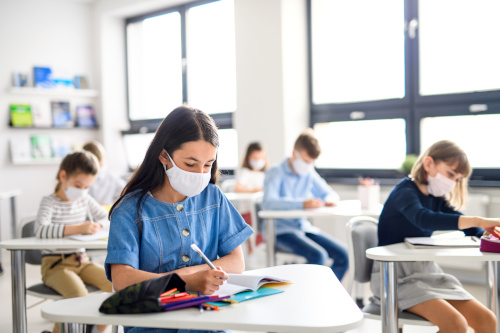NWEA, a nonprofit, research and educational services organization serving K-12 students, has released new research highlighting the latest data on achievement during the pandemic.
Key findings from this third school year impacted by COVID-19 suggest early signs of rebounding offering some hope. However, results also underscore that recovery is still years away and there is a need for sustained urgency in addressing interrupted learning.
The study is the latest in a series of research from NWEA focused on tracking the impact of the pandemic on learning. It used data from over 8.3 million students who took the MAP Growth assessment in reading and math during the COVID-impacted years (spanning 2018-19 to 2021-22) and compared these data to an equivalent sized sample of students who tested before the pandemic (spanning 2015-16 to 2018-19). Key takeaways from this latest data bring both hope and concern.
Early signs of hope:
- Initial signs of academic rebounding were evident in 2021-22 with academic gains (fall to spring) that paralleled pre-pandemic trends, especially in math and among younger students.
- Academic growth rebounded to parallel pre-pandemic trends across school-poverty levels; however, students in low-poverty schools have less ground to make-up and thus will likely recover faster.
Continued concern:
- Despite initial signs of rebounding, student achievement is still lower than where we’d expect it to be if the pandemic did not happen. Furthermore, if improvements continue at the rate we saw this year, the timeline for a full recovery is years away and will likely extend past the availability of federal recovery funds.
- Achievement was lower for all student groups in spring 2022 (compared to pre-pandemic levels); with historically marginalized students and students in high-poverty schools remaining disproportionately impacted.
“These signs of rebounding are especially heartening during another challenging school year of more variants, staff shortages, and a host of uncertainties. We think that speaks volumes to the tremendous effort put forth by our schools to support students,” said Dr. Karyn Lewis, Director of the Center for School and Student Progress at NWEA, and the co-author with Dr. Megan Kuhfeld on this research study. “Any signs of hope are reasons to celebrate, and we must take that moment to do so, and then push forward with renewed energy and a sense of urgency because we’re just at the initial steps of addressing the tremendous impact of this pandemic on our students.”
NWEA’s researchers point out that this data is a national view of the continued impacts of the pandemic, which provides a broad “where are trends heading” perspective. But they urge that local context is just as, if not more, important. They note that even within districts, impacts are not equal between schools. That level of nuance should be evaluated when looking at recovery efforts and long-term planning so that schools can “right-size” their efforts to most effectively help all students move toward better outcomes.
While schools work tirelessly to support the growth of students, they cannot do this alone. Over the past two years, NWEA has collaborated with colleagues from across the policy and civil rights community to offer recommendations to support pandemic recovery, and we continue that push going into the next school year.
“We urge policymakers and education leaders to use data and have strong data systems that provide continuous feedback on interventions to inform recovery,” said Lindsay Dworkin, SVP of Policy and Communications at NWEA. “Beyond investing in research-based interventions that are targeted at students most impacted by the pandemic, education leaders will need the resources, support, and flexibility necessary to expand instructional time for students as well as provide more professional learning opportunities to their teachers.”
- How digital tools and AI can enhance social studies - April 23, 2024
- Using universal screening to improve student well-being - April 22, 2024
- 3 ways to avoid summer learning loss - April 19, 2024


